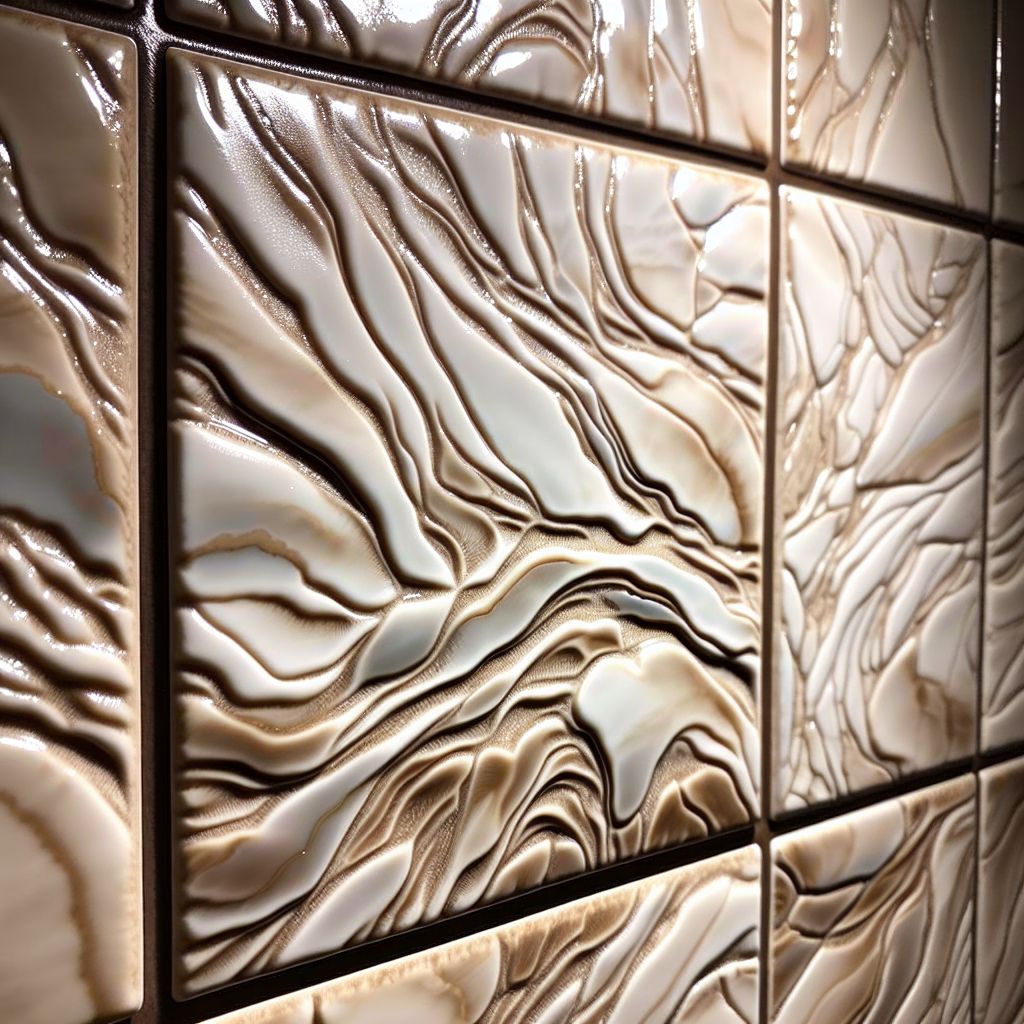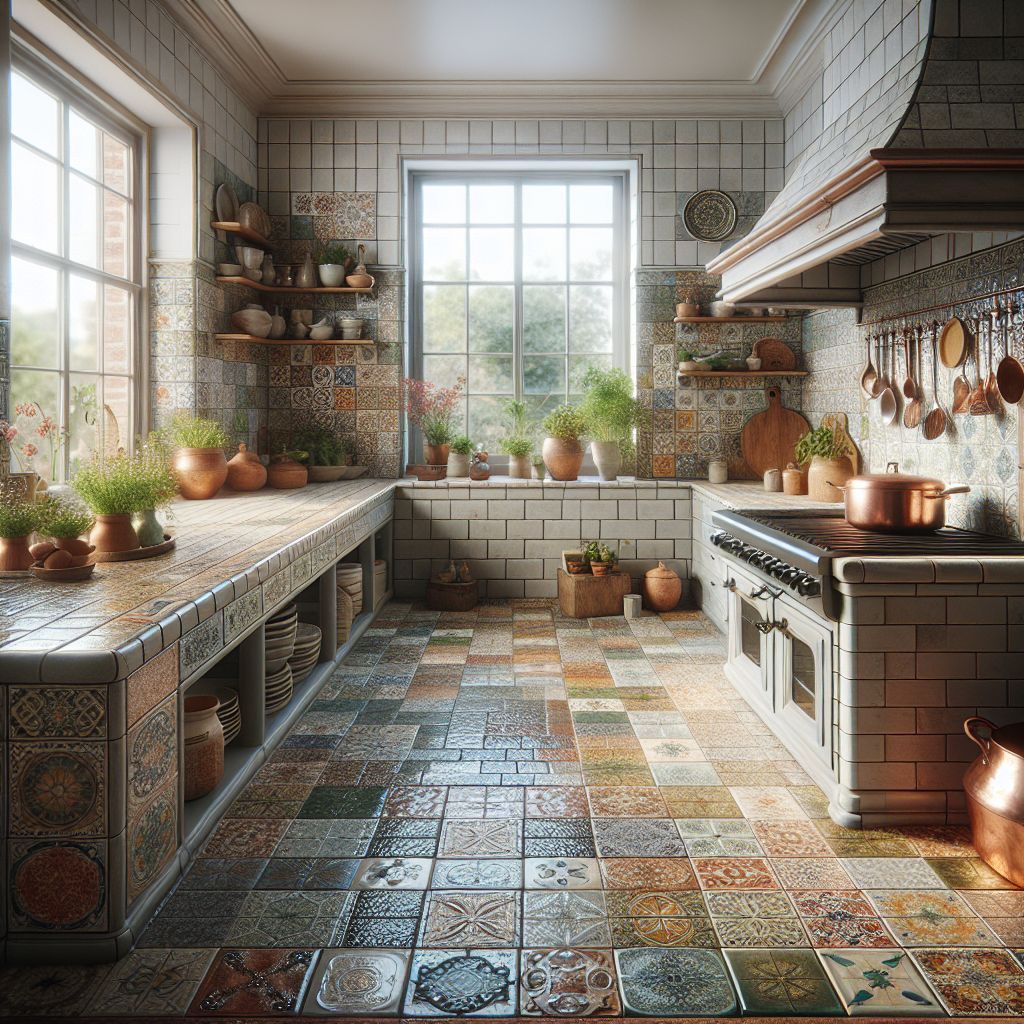
Key Takeaways
-
Identify ceramic and porcelain tiles by conducting a simple density test.
-
Use the water absorption experiment to differentiate between tile types.
-
Look for distinct visual elements like patterns, glaze, and texture to determine the tile material.
-
Understand the unique characteristics of marble, granite, cement, and glass tiles.
-
Tap sounds and texture can help you assess the quality and type of tile.
Uncovering the Secrets of Tile Identification
Choosing the right tile for your home is not just about the color or pattern—it’s about understanding what your tile is made of and how it will perform in your space. Whether you’re renovating a kitchen, bathroom, or adding a statement floor to your living room, knowing the difference between tile types is critical. Let’s dive into the nuances of tile identification, starting with the most common materials: ceramic and porcelain.
Many folks think ceramic and porcelain are the same, but they have key differences. Both are made from clay and other natural materials, then fired in a kiln, but the specifics of their compositions and the firing process set them apart. This affects not just the look and feel but also the tile’s durability and where it can be best used.
-
Perform a simple density test to tell if you’re dealing with porcelain or ceramic.
-
Carry out a water absorption experiment to confirm your findings.
-
Inspect the tile’s visual characteristics to determine its material.
The Density Test: Porcelain vs. Ceramic
To start, let’s talk about the density test. Porcelain tiles are known for their density and strength, which come from being fired at higher temperatures and for a longer period than ceramic tiles. This process makes porcelain less porous and better suited for high-traffic areas or places with moisture. Here’s how to check the density:
-
Take two tiles, one porcelain and one ceramic, if possible.
-
Feel the weight of each tile; the porcelain should feel heavier due to its density.
-
Examine the sides of the tile. Porcelain usually has a finer grain due to its composition and the high-temperature firing process.
Remember, the density affects the tile’s weight, so a heavier tile is likely a sign of porcelain. This test is quick and can be done in-store before you make a purchase, but is less helpful if you’re classifying already-installed tiles.
The Water Absorption Experiment
Next up is the water absorption test. Porcelain tiles absorb less water than ceramic tiles, which makes them ideal for bathrooms and kitchens. Here’s a simple way to test this:
-
Place a few drops of water on the back of the tile.
-
Watch how quickly the water is absorbed or if it beads on the surface.
-
Porcelain tiles should absorb the water very slowly or not at all, while ceramic tiles will absorb it more quickly.
This experiment not only helps you determine your tile but also tells you about its quality and potential longevity in your home.

Visual Inspection: Patterns, Glaze, and Texture
Lastly, let’s use our eyes. The look of the tile can give away its material. Ceramic tiles often have a clear protective glaze on top of the colored pattern, which can wear away over time. Porcelain tiles, on the other hand, typically have color throughout the tile, making chips less noticeable and the tile more durable.
-
Look closely at the tile’s surface for a consistent color and pattern that goes through the body of the tile, which is indicative of porcelain.
-
Check the glaze on ceramic tiles; it should be even and glossy, without any pits or irregularities.
-
Feel the texture of the tile; a smooth finish often points to a ceramic tile, while a textured finish may indicate porcelain designed to mimic natural stone or wood.
These visual clues are not just about aesthetics; they’re about performance and wear over time. Choosing the right type of tile will ensure that it stays beautiful and functional for years to come.
Cement Tiles: Handcrafted and Eclectic
Now, let’s shift our focus to cement tiles. These tiles are known for their vibrant patterns and colors, and they bring a handcrafted appeal to any space. Unlike ceramic and porcelain tiles, cement tiles are made from a mixture of cement, mineral pigments, and sand. After being pressed by hand and cured, they are left with a matte finish that is both beautiful and porous.
To identify cement tiles, look for a variation in color and imperfections that highlight their artisanal nature. They’re not as dense as porcelain tiles, but they have a unique charm that can’t be replicated by industrial means. Keep in mind that due to their porosity, they require sealing to prevent stains and water damage.
Glass Tiles: Translucent and Modern
Glass tiles are the gems of the tile world, offering a modern and sleek look with their translucent beauty. They are perfect for creating a clean, bright aesthetic and are commonly used in backsplashes, shower walls, and as accent pieces. Glass tiles are easy to spot—they’re shiny, have a smooth surface, and the color is typically coated on the back of the tile to protect it from wear.
While they are not suited for high-traffic floor areas due to their fragility, glass tiles are a durable option for walls and light-use areas. Their non-porous nature makes them resistant to stains, mold, and mildew, which is especially beneficial in damp environments like bathrooms.
Practical Guide to Tile Tap Sounds and Texture
Another way to identify tile types is by the sound they make when tapped. This is particularly useful when comparing tiles that may look similar but have different material properties.
The Hollow Sound Test
When you tap a ceramic tile, it tends to produce a dull, solid sound due to its relatively softer and less dense body. Porcelain, on the other hand, often emits a more ringing, high-pitched tone because of its density and hardness. Try tapping on various tiles with a coin or a small tool, and listen to the sounds they make. This auditory cue can be a helpful indicator of the tile’s composition.
Example: A homeowner taps on a tile with a screwdriver and hears a dull thud. This suggests the tile might be ceramic. Tapping on another tile, a clear ping resonates, indicating it’s more likely to be porcelain.
The sound test is a quick and straightforward method that can be done anywhere, whether you’re in a store comparing options or at home inspecting existing tiles.
The Surface Feel Technique
Texture can also give you clues about a tile’s material. Run your fingers across the surface of the tile; is it smooth or textured? Ceramic tiles often have a glazed surface that feels glassy, while porcelain tiles might have a deliberate texture to mimic other materials like stone or wood.
Cement tiles may feel slightly sandy or grainy due to their composition, and marble tiles will have a cool, smooth surface with natural veining that you can feel. Granite tiles are typically polished and feel smooth, but you can sense the granular quality under the polish.

Tile Type Specifics: When and Where Each Is Used
When you’re identifying a tile, consider where in your home it is. Certain tiles suit certain spaces – like a kitchen or shower or outdoors – more than other types of tiles.
Indoor vs. Outdoor Application
For outdoor spaces, porcelain tiles are often the best choice because they’re frost-resistant and can withstand temperature changes without cracking. Ceramic tiles, being less dense and more porous, are generally not suitable for outdoor use where freezing temperatures are a concern.
Cement tiles, while beautiful, require careful sealing and maintenance to protect them from the elements. Glass tiles are typically reserved for indoor use due to their fragility and potential for damage under direct sunlight over time.
Bathrooms and Kitchens: Moisture-Resistant Options
In areas with high moisture, such as bathrooms and kitchens, water-resistant tiles are generally used. Porcelain is a top contender here due to its low porosity. Ceramic tiles may also be used in these areas, provided they have a good glaze and are properly sealed.
Glass tiles are excellent for bathroom walls or backsplashes in the kitchen because they don’t absorb moisture and are easy to clean. However, for flooring in these wet areas, textured porcelain or natural stone tiles are more commonly used to prevent slipping.
Living Areas and Bedrooms: The Comfort Factor
For living areas and bedrooms, comfort underfoot is key. Ceramic and porcelain tiles can feel cold and hard, so they are rarely the first choice for these cozy spaces unless you have underfloor heating.
If you have ceramic or porcelain tiles already installed and you don’t want to replace your floors, area rugs can add the necessary warmth and texture to make these spaces inviting.
-
Porcelain tiles are best for high-traffic and outdoor areas due to their durability and frost resistance.
-
Ceramic tiles are suitable for walls and low-traffic areas and can be used on floors if they’re glazed and sealed.
-
For bathrooms and kitchens, prioritize moisture-resistant tiles like porcelain or glazed ceramic.
Slip Resistance Codes for Safety
For areas like bathrooms and kitchens where the floor can get wet, slip resistance is a key factor. Tiles are rated with a Coefficient of Friction (COF) score, which measures the slip resistance. The higher the score, the less likely you are to slip. For safety, tiles with a COF of 0.6 or above are recommended for residential use.
Water Absorption Rates and Tile Suitability
Water absorption is another critical factor. This is particularly important in areas prone to moisture. Porcelain tiles, with a water absorption rate of less than 0.5 percent, are ideal for bathrooms, kitchens, and even outdoor spaces. Ceramic tiles typically have a higher absorption rate and are better suited for dry or low-moisture areas unless they are glazed.

Frequently Asked Questions
When it comes to tile, questions abound. Here are some of the most common inquiries I’ve encountered, along with straightforward answers to help you make informed decisions for your home.
How can I tell if my tile is high quality?
High-quality tiles will have consistent coloring and texture throughout the body of the tile. For porcelain, the color and pattern should go all the way through. Check for a clear and crisp glaze on ceramic tiles without any bubbling or imperfections. Also, high-quality tiles should have a uniform size and shape, with straight edges that make installation seamless.
Can I use porcelain tile outdoors in cold weather?
Yes, porcelain tile is an excellent choice for outdoor use in cold weather because of its low water absorption rate. This means it’s less likely to crack when temperatures drop below freezing. The tile should have a PEI rating of 4 or 5 for maximum durability against harsh weather conditions.
Why do marble tiles have different patterns?
Marble is a natural stone, so each tile is unique. The veins you see are formed from mineral deposits like quartz and iron, which create the beautiful and varied patterns that make marble so desirable. No two marble tiles will ever be exactly the same.
Marble tiles offer a timeless look, but they require more maintenance than man-made tiles. If you have marble tile installed, be prepared to seal it regularly to protect against stains and etching.
Are cement tiles suitable for showers?
Cement tiles are sometimes used in showers, but they need to be sealed properly to prevent water penetration. Because they’re porous, they require more maintenance to keep them looking good. They must be resealed periodically to protect against moisture and stains.



